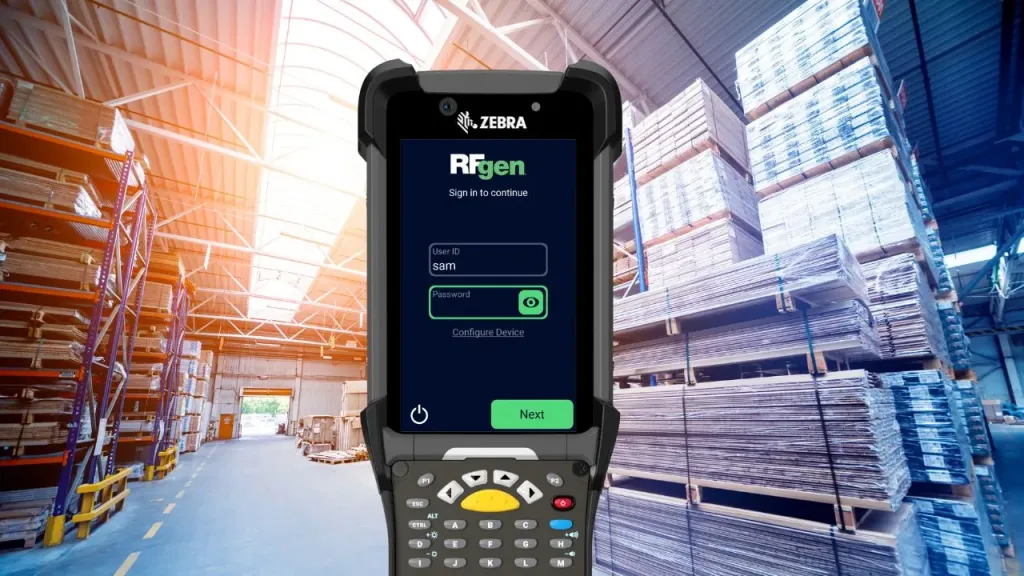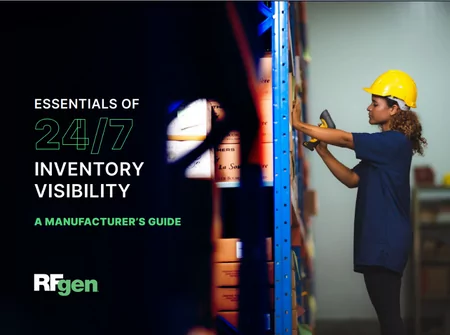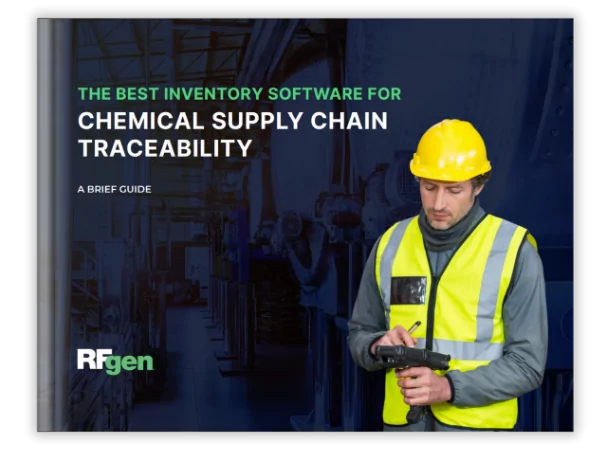
FIFO Inventory Management: Fundamentals Critical for Business Success
In inventory management, the FIFO (First-In, First-Out) method takes center stage, offering a performance of unmatched clarity and efficiency in the world of stock control. The FIFO inventory valuation method assumes that the oldest items in stock are sold first, which can help businesses minimize COGS and enhance profitability. Imagine your inventory as a flowing river, where the oldest water—your earliest products—moves forward to be used first, ensuring nothing stagnates or loses its relevance.
This inventory strategy mirrors the natural consumption and sales pattern, making sure that businesses can keep pace with demand. Keeping older stock moving prevents undue depreciation or expiration. It also helps businesses maintain a healthier, more accurate ledger, reflecting true operational costs.
But how does FIFO work? How is it different than LIFO (Last-In, Last-Out)? What does FIFO look like in practice?
In this deep dive into FIFO inventory management, we will answer all of these questions and more, highlighting important use cases and the strategic value it offers.
Understanding FIFO: The Basics
FIFO helps businesses align the physical flow of goods with their representation on financial statements. This offers a clear and accurate picture of inventory health. It also has an impact on the cost of goods sold (COGS).
What is FIFO inventory management?
FIFO Definition: FIFO is an inventory management technique that ensures the oldest products (first bought or produced) leave the inventory first. This is crucial for products with expiration dates, semiconductors, seasonal items, or any goods where freshness and relevance are key to customer satisfaction and regulatory compliance.
Strategic Importance: The primary goal of FIFO is to mirror the natural depletion of inventory in financial records, thereby providing a realistic view of inventory valuation and COGS. The FIFO method improves accuracy in calculating cost of goods sold (COGS) and inventory valuation, making it suitable for businesses dealing with perishable goods. Accurate financial portrayal assists with strategic planning, budgeting, and forecasting.
How to Track Your Inventory Anytime, All the Time
The Financial Transparency of FIFO
Since FIFO aligns inventory operations with financial reporting, inventory valuation transparency increases. Performance can be better monitored and optimized. The ability to streamline inventory control allows for enhanced profitability analyses. True profit margins can be determined because sales revenue matches the actual cost of inventory sold.
Calculating COGS with Precision Using FIFO
Calculating the cost of goods sold (COGS) with FIFO is a straightforward process.
First, pinpoint the cost associated with the oldest batch of inventory. Without accurate inventory tracking or digital inventory management, this may require an in-depth review of inventory purchase records to identify initial costs.
Once the oldest inventory cost is established, the formula is simple:
Old Inventory Cost + Purchased Inventory – Ending Inventory = Cost of Goods Sold (COGS)
With FIFO, older inventory is theoretically purchased at a lower price than newer inventory. This is because the newer inventory is purchased at a higher inflationary value. Thus, the lower cost of the older inventory at the current (higher) inflationary value leads to higher net income.

How to Achieve 100% Paperless Inventory
Advantages of FIFO
What are the advantages of FIFO inventory valuation? They include:
Accurate Cost Analysis
As mentioned previously, FIFO reflects the true cost of inventory because it can be accurately represented in financial statements. Accuracy of this kind allows for more informed decision-making and financial planning.
Higher Profit Calculation
In environments where inflation or rising costs are a factor, FIFO can show higher profits by selling older, less expensive inventory first. FIFO’s ability to impact the bottom line in the short term offers a more attractive financial position to investors and stakeholders.
Improved Inventory Quality
FIFO encourages the rotation of stock, which can lead to better inventory quality overall. Customers receive products that are fresher or more current, which can enhance customer satisfaction and reduce the need for markdowns and waste.
Reduced Inventory Obsolescence
By selling the oldest items first, FIFO minimizes the risks associated with inventory becoming obsolete or going out of date. This is particularly beneficial for businesses dealing with perishable goods, fashion items, or technology products, where product relevance can rapidly diminish.
Ease of Application
The principles of FIFO are intuitive and mimic the natural flow of inventory, making it a method that can be easily understood and applied across various sectors. Aided by inventory software, the simplicity of FIFO helps reduce errors and enhance operational efficiency.
Software Compatibility
FIFO’s widespread acceptance and straightforward logic mean it is supported by the majority of accounting and inventory management software. Mobile inventory management solutions like RFgen can automatically enforce FIFO rules in the warehouse.

Mobile Inventory Management: The Comprehensive Guide
Alignment with IFRS and GAAP
FIFO is recognized and accepted by international financial reporting standards (IFRS) and generally accepted accounting principles (GAAP) in the United States. Compliance with one or both of the accounting practices facilitates easier auditing and financial analysis.
Tax Advantages in Certain Jurisdictions
While FIFO may lead to higher taxable income due to lower COGS in times of rising prices, in jurisdictions where tax implications are favorable, this can be a strategic advantage. In particular, a more conservative approach to inventory valuation more closely aligns with standard accounting practices.
Implementing FIFO Best Practices
Succeeding with FIFO inventory control hinges on proper execution. Best practices include:
- Implement a robust inventory management system that integrates your ERP system and mobile data collection technologies.
- Leverage smart mobile software that enforces FIFO rules automatically and prevents errors with real-time transactions and reporting.
- Conduct regular inventory audits in the form of cycle counting (or automated cycle counting with mobile software) or periodic physical counts.
- Train your staff on the FIFO methodology, including mobile systems that simplify the process and drastically reduce training requirements.
- Optimize warehouse layout in a way that encourages the movement of older stock first, such as “drive-through” or “push-back” racking systems.
- Label all inventory and racks clearly. Visible, durable labeling is a must. Enhance labeling with desktop or mobile label printers.
- Monitor the shelf life of perishable goods or items with expiration dates so that they get sold before they expire. Automation software can simplify the process.
- Adjust purchasing practices: Align your purchasing decisions with sales data to avoid overstocking. Buying in bulk only makes sense if the sales velocity supports it, as holding onto inventory too long can negate the benefits of FIFO.
- Implement strict receiving protocols to ensure that items are added to the system and physically placed in the correct location to maintain FIFO discipline.
- Review and adjust your FIFO strategy regularly. Business and economic environments change constantly. What works today may not be as effective tomorrow.

7 Signs You Need Mobile Barcoding
FIFO in Practice: Real-World Examples
Now that we’ve discussed FIFO in theory, let’s examine what FIFO looks like in practice.
Distribution Centers (DCs): Streamlining Warehouse Order Fulfillment
Warehouses with high volumes often utilize FIFO to manage products. Whether an e-commerce business, a retail distribution center, or a just-in-time distributor of manufactured goods, FIFO can be an effective means of inventory valuation.
Utilizing FIFO ensures that earlier stock is dispatched first, reducing the likelihood of selling outdated models or designs. It also keeps the warehouse from getting overstocked with obsolete items.
In one case, JIT tire distributor Myers Tire Supply used FIFO to handle fast-paced inventory operations. To enhance tracking of its rapidly rotating stock, the company implemented mobile barcoding software to gain pinpoint accuracy and significantly greater efficiency.

Just-in-time Tire Distributor Leverages WMS Alternative for FIFO
Manufacturing: Aligning Production with Demand
Manufacturing companies apply FIFO in managing raw materials and finished goods. This ensures that materials bought first are used in production before newer ones, aligning with demand patterns and reducing the risk of stock obsolescence.
For finished products, FIFO helps in shipping older inventory first, ensuring that customers receive products in optimal condition.

The Essentials of 24/7 Inventory Visibility in Manufacturing
Medical Device Manufacturing: Ensuring Compliance and Safety
In the medical device manufacturing industry, FIFO is a critical inventory management practice for maintaining compliance with strict regulatory standards and patient safety requirements, such as those overseen by the FDA.
Since components must be viable for precise electronics or medical devices, extremely accurate FIFO inventory control must be upheld at all times. Other valuation methods too easily result in components becoming expired or non-compliant with health regulations. In addition, many products have sterilization dates or materials that degrade over time.
Optovue, a global manufacturer of ophthalmic imaging equipment, uses medical inventory software to keep FIFO rules in check while also simplifying traceability compliance. With the assistance of technology, the company operates with near-perfect inventory accuracy.

Case Study: Optovue Eyes Inventory Improvements for FIFO
Grocery Stores: Freshness Before Expiration
In grocery stores, FIFO is crucial for managing perishable items like fruits, vegetables, dairy, and meat products. Stocking older items in front makes them more accessible.
This way, stores move these food items before their sell-by date, reducing waste and ensuring customers always receive fresh products. Product quality is upheld while also complying with health and safety standards.

Mobile Inventory Solutions for the Food & Beverage Industry
Construction Industry: Preventing Material Waste
The construction and building materials industry benefits from FIFO as well. In managing a wide variety of inventory needed for projects, FIFO helps prevent a buildup of materials that might deteriorate over time.
This is important, since materials may include structural steel, cement, lumber, prefabricated windows, and more. Some of these stock types are susceptible to environmental conditions.
Not only does FIFO prevent materials from going unused or degrading, it also reduces waste and losses—not to mention storage costs.
Chemical Industries: Maintaining Product Integrity
In the chemicals industry, FIFO is essential for managing chemicals and raw materials that have a limited shelf life or require specific storage conditions.
Certain chemicals, when left to sit, risk degrading, becoming unstable, or forming hazardous byproducts—all of which compromise product quality and human safety. Therefore, FIFO helps maintain compliance with health, safety, and environmental regulations.
Lastly, FIFO helps reduce the costs associated with disposing of expired or unusable chemicals.

The Best Inventory Software for Chemical Traceability
Comparing FIFO and LIFO
Like FIFO, LIFO (Last-In, First-Out) offers a proven valuation approach. Recent surveys reveal that approximately 55% of companies were using FIFO as their primary inventory method. Meanwhile, only 15% of companies were utilizing LIFO. It is also essential to consider other inventory valuation methods as alternatives to FIFO and LIFO to provide a comprehensive understanding of inventory management.
Still, LIFO is an important inventory management strategy.
While LIFO also impacts a company’s financial health and tax obligations, LIFO differs significantly in regard to accounting practices and financial reporting.
LIFO: Differences from FIFO
Whereas FIFO assumes that the oldest items added to inventory are the first sold, LIFO assumes that the most recently acquired inventory is sold first.
FIFO may help contribute to higher ending inventory balances on the balance sheet, but LIFO does the opposite. Instead of increasing inventory balances, the ending value is lower, leading to lower net income.
Under FIFO, inventory stock tends to be closely aligned with current market costs. In LIFO, however, balance sheet results may underrepresent the current value of inventory if prices have risen.
FIFO can be useful during periods of inflation when higher profits may positively affect investor perception. On the other hand, LIFO shows reduced profitability, which can provide tax advantages, in particular short-term tax relief.
In times of rising prices, LIFO results in higher COGS due to the use of newer, more expensive inventory, which can lower taxable income and thus, tax liabilities.
However, LIFO may complicate financial reporting and obscure true profit margins, as the cost of goods sold might not accurately reflect the actual flow of inventory over time.
Additionally, LIFO’s reception varies globally, with some accounting standards discouraging its use, thereby limiting its applicability for international businesses.

Reducing Inventory Costs & Maximizing Profit Margins
Strategic Considerations for Businesses
Choosing between FIFO and LIFO ultimately comes down to financial strategy. When considering which to use, businesses must weigh strategic considerations like financial reporting, tax implications, and compliance with standards.
FIFO, preferred under IFRS, showcases a stronger financial position by reporting lower COGS and thus higher net income, beneficial during inflation. Enhancing investor and lender perceptions by reflecting current market prices in inventory valuation may be most desirable in industries where asset valuation impacts financial health.
Conversely, LIFO, permissible in the US, reduces taxable income during inflation by recognizing higher recent costs, offering short-term tax savings and improved cash flow. However, it may present a weaker financial stance due to lower earnings and outdated inventory valuation.
Businesses must balance these factors with their business goals, choosing a method that aligns with their operational needs and the economic environment.
Embracing FIFO for Inventory Excellence
FIFO offers a clear path to inventory management and financial integrity. Of the many inventory valuation methods for inventory, it remains one of the most popular. Adopting a FIFO strategy can help businesses manage stock flow more efficiently and generate accurate financial reporting. But FIFO is complex—and don’t forget about the technology component. Powerful mobile inventory solutions like RFgen can help your enterprise revolutionize inventory management with automation and barcoding, regardless of what inventory valuation method you use.
FAQ: FIFO Inventory Management
1. What is FIFO in inventory management?
FIFO (First-In, First-Out) is an inventory management method where the oldest stock (first-in) is sold or used first. This approach minimizes waste, prevents product obsolescence, and ensures better inventory turnover.
2. Why is FIFO important for businesses?
FIFO helps businesses reduce spoilage, maintain accurate inventory valuation, and improve cash flow. It is particularly beneficial for industries with perishable goods, such as food, pharmaceuticals, and retail.
3. How does FIFO impact inventory accuracy?
By ensuring that older inventory is used first, FIFO minimizes discrepancies between physical stock and recorded inventory. It enhances tracking, reduces stock obsolescence, and improves order fulfillment efficiency.
4. What industries benefit the most from FIFO?
Industries dealing with perishable goods—such as food and beverage, pharmaceuticals, and manufacturing—rely on FIFO to prevent expired or obsolete stock. However, FIFO is also useful in retail and electronics, where inventory turnover is essential.
5. How can FIFO improve inventory efficiency?
FIFO streamlines stock rotation, reduces holding costs, and improves demand forecasting. It also helps prevent bottlenecks in warehouse operations by ensuring products move efficiently through the supply chain.
6. What are some common challenges of FIFO?
Challenges include improper stock organization, lack of real-time inventory tracking, and human error in manual processes. Businesses must invest in efficient warehouse layouts and inventory management software to implement FIFO successfully.
7. How does FIFO affect financial reporting?
FIFO impacts financial statements by ensuring older, lower-cost inventory is used first. This can result in lower cost of goods sold (COGS) during inflationary periods, leading to higher reported profits compared to other methods like LIFO (Last-In, First-Out).
8. What tools can help businesses implement FIFO?
Warehouse management systems (WMS), barcode scanning, RFID tracking, and automated inventory solutions can optimize FIFO implementation, reducing manual errors and improving efficiency.
9. What’s the difference between FIFO and LIFO?
FIFO sells the oldest stock first, while LIFO (Last-In, First-Out) sells the newest stock first. FIFO is preferred for industries managing perishable goods, while LIFO can be beneficial for businesses looking to reduce tax liabilities in inflationary environments.
10. How can businesses ensure FIFO compliance in warehouses?
Using clear labeling, organizing shelves for easy access to older stock, implementing automated tracking systems, and training warehouse staff on FIFO best practices can help maintain compliance.







